
CFA Level 1 (2009) - 2
.pdf
Study Session 4
Cross-Reference [0 CFA Institute Assigned Reading # 15 - Markets in Action
The tax that we are analyzing in Figure 4(b) could be a sales tax that is added ro the price of the good at the time of sale. So, instead of paying PE' buyers are now forced ro pay Prax ' (i.e., tax = Prax - PEl. The buyer pays the entire tax (the statutory incidence). Since, prior to the imposition of the tax, their reference point was P£, the buyer only sees the price rise from PE to Prax (the buyer's tax burden). Hence, the portion of the tax
borne by buyers is the area bounded by P , P |
tax |
,and n |
; this is the actual tax incidence |
E |
'<..tax |
|
|
on buyers. |
|
|
|
Note that the supply curve in Figure 4(b) does not move as a resulr of a tax on buyers, and that given the original demand curve, D, suppliers would have supplied the equilibrium quantity Q E at price PE' The resulr is that suppliers are penalized because they would have produced at the QE' P E point, but instead produce at ~ax and receive Ps ' Hence, the portion of the tax borne by sellers is the area bounded by P£, Ps ' and ~ax; this is the actual tax incidence on sellers. Note that we are still faced with the triangular deadweight loss.
~ Pmln'sor'i /'l/ote.· Ti'e poilU .1'011 knoll' i.i that thl' aaual tax incidC/lcc i., \~~ independent of whether the gOllcrnl1lelll imposes the tax (statuto,:}' incidencc) 0/7
wnsul1lers or suppliers.
How Elasticities of Supply and Demand Influence the Incidence of a Tax
'X/hen buyers and sellers share the tax burden, the relative elasticities of suppl~' and demand will determine the actual incidence of a tax.
•If demand is less elastic (i.e., the demand curve is steeper) than supply, consumers will
bear a higher burden, that is, pay a greater portion of the tax revenue than suppliers.
•If supply is less elastic (i.e., the supply curve is steeper) than demand, suppliers will bear a higher burden, that is, pay a greater portion of the tax, revenue than consumers. Here, the change in the quantiry supplied for a given change in price
will be small-buyers have more "leverage" in this type of marker. The parry with the more elastic curve will be able to react more to the changes imposed by the tax, Hence, they can avoid more of the burden.
Panels (a) and (b) in Figure 5 are the same in all respects, except that the supply curve in panel (b) is significantly steeper-it is less elastic. Comparing panel (a) with panel (b), we can see that the portion of tax revenue borne by the seller is much greater than that borne by the buyer as the supply curve becomes less elastic. When demand is more elastic relative to supply, buyers "pay" a lower portion of the tax because they have the greater ability to substitute away from the good.
Notice that as the elasticity of either demand or supply decreases, the deadweight loss is also reduced. This is because fewer trading opportunities are eliminated by the imposition of the tax, meaning that it is more difficult for either demanders or
suppliers to substitute away from the good. With less effect on equilibrium quantity, the allocation of resources is less affected and efficiency is reduced less.
©2008 Kaplan Schweser |
Page 41 |
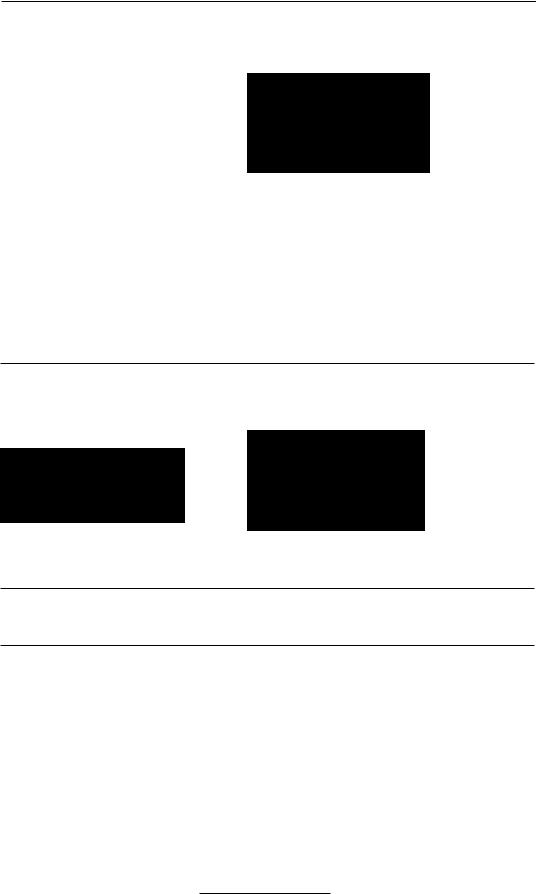
Scudy Session 4
Cross-Reference to CFA Institute Assigned Reading #15 - Markets in Action
Figure 5: Elasticity of Supply and Tax Incidence
(a) Elastic Supply Curve |
(b) Inelastic Supply Curve |
Price |
Price |
rax r~v~nlle from buytrs
p,...."1IIIlI1 |
s |
p |
|
Pf |
|
----------t-------: |
|
(ax revenue from sellers: |
|
L - |
Quantity |
lax revenue from huyers
[ax revenue from sellers:
L - |
--'--- |
D
Quantity
0,,, Q 0,,, Q
In Figure 6. we illustrate the result for differences in the dasticin' of demand. In panel
(b) del1land is reLlliveh' morl indasri(. and wc sec th~\[ the size of thl' dcad\\eishr los~
(anJ lhe decrease in elJlIilihriul1l olltpll[) i~ smaller when dcmand is mor,' inclastic. \X l can also sec that the actual incidence or the tax imposed on suppliers 1:~i1I" more he:l\'ih· on buyers \\hen demand is more inelastic.
Figure 6: Elasticity of Demand and Tax Incidence
(aJ |
Elastic Demand Curve |
|
(b) Inelastic Demand Curve |
Price |
|
|
Price |
I |
. |
|
tax revenue (rom burcr~ |
|
|
||
{J,X revenue TrOIn buyers |
|
|
|
|
SrJ...x |
|
|
|
|
5 |
|
|
, |
|
|
rax revenue from sellers: |
|
I [ax revenue from sellers ~ ; |
|
|
|
Quantin' |
|
L - |
0,,, |
'--.--------- ' -------- Quantin' |
|
|
|
Q"Q, |
|
LOS 15.d: Discuss the impact of subsidies, quotas, and markets for illegal goods on demand, supply, and market equilibrium.
Subsidies arc payments mad, by goyernmelHS [Q producers, often farmers. The effects of a subsidy are illustrated in Figure 7. where we use the market for soybeans as an example. Note here that with 110 subsidies. equilibrium quantity in the market for soybeans is 60 tons Jnnually at a price of $60 per ton. A subsidy of $30 per ton cause, a downward shift in the supply curve from S to (S - subsidy), which results in an increase in the equilibrium quantity to 90 million rons per year and a decrease in the equilibrium price (paid by buyers) to $45 per ron. At the new equilibrium, farmers receive $75 per ton (the market price of $45, plus the $30 subsidy).
Recognizing that the (unsubsidized) supply curve represents the marginal cost and that the demand curve represents the marginal benefi t, the marginal cost is greater than the marginal benefit at the new equilibrium with the subsidy. This leads to a deadweight loss
Page 42 |
©2008 Kaplan Schweser |
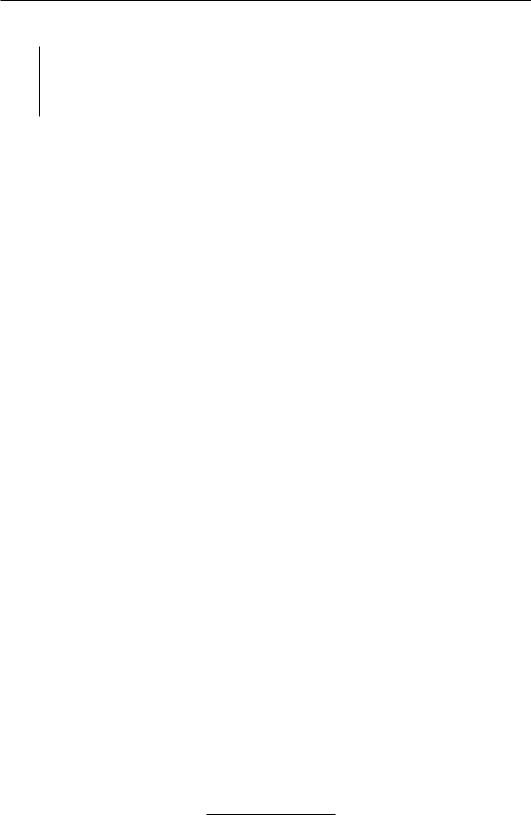
Srudy Session 4
Cross-Reference to CFA Institute Assigned Reading # IS - Markets in Action
from overproduction. The resources used to produce the additional 30 million rons of soybeans have a value in some other use that is greater than the value of these additional soybeans [0 consumers.
Figure 7: Soybean Price Subsidy
Price (dollar, per ron)
s
105
90
S - subsidv
75
60
'- 1k.ldwl,j1!-ht In,..,.,
II-Olll (l\'npruJuLrion
|
: ,/ |
'. |
|
|
|
'"" |
|
|
|
|
, |
'" |
|
|
|
~lllan(ir~' |
"L) |
|
|
|
/' |
Increase.\ |
Quanrin |
|
:---+: |
|
|
||
|
|
(lllillioll;,or'lolls |
||
,'10 60 |
90 |
120 J |
S() 1SO |
rn IT;lrl |
|
||||
Production quotas are used to regulate markets by imposing an upper limit on the quantity of a good that may be produced over a specified time period. Quotas are often used by governments to regulate agricultural markets.
Continuing with our soybean example, let's suppose the government imposes a production quota on soybeans of 60 million tons per year. In Figure 8, we see that in the absence of a quota, soybean production is 90 million tons per year at a price of $45 per ton, With a 60 million ron quota, the equilibrium price rises to $75 per ron.
The reduction in the quantity of soybeans produced due to the quota leads ro an inefficient allocation of resources and a deadweight loss to the economy. The quota not only increases the market price, it lowers the marginal cost of producing the quota quantity. At the quota amount, marginal benefit (price) exceeds marginal cost. This explains why producers often seek the imposition of quotas.
Note that if a quota is greater than the equilibrium quantity of 90 million tons, nothing will change beclUse farmers arc already producing less than the maximum production allowed under the quota.
©2008 Kaplan Schweser |
Page 43 |
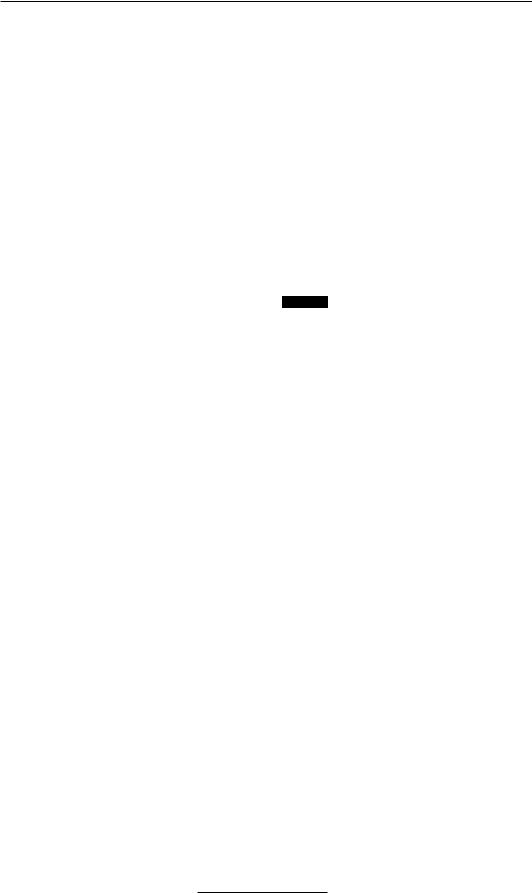
Study Session 4
Cross-Reference to CFA Institute Assigned Reading #15 - Markets in Action
Figure 8: Soybean Production Quota
Price
(dollars per roll)
105 |
|
|
|
|
|
|
90 |
|
|
|
|
s |
|
75 |
|
|
|
|
||
|
|
|
|
|
|
|
60 |
|
|
|
|
|
|
45 |
|
|
|
|
Deadweight loss |
|
|
|
|
|
|
||
|
|
|
|
|
from underproduction |
|
30 |
|
|
|
|
|
|
1') |
|
/ |
|
|
Qu.antir~· proJuccd dtTrC;i~t::. |
|
|
,/ |
|
|
[0 Q.1I0(;l anlOUn[ ~ (1(1 |
||
, |
/ |
|
|
|||
/ |
|
|
|
|
'-)L1;1l111 r'. |
|
1- |
|
|
|
|
|
i ~ I ill!(I I I '. ~) ~ ; \ ): 1 ' |
|
|
|
|
|
||
[) |
|
W |
60 |
90 |
J 20 1')0 180 |
|
|
|
|||||
Illegal Goods
When people get caught buying or selling illegal goods. such as drugs or guns, they mUSl pay penalties, including fines, imprisonment. or both. As the severity of the pe!~~lt:
or the likelihood of getting caught increases, the rotal COStS of illegal trade increase. To see how the penalties from breaking the law affect the equilibrium quantity of an iJlegal good, consider the U.S. market for Cuban cigars illustrated in Figure 9. Here, the supply curve,S, represents the minimum prices that sellers would accept if Cuban
cigars were legal, and the demand curve, D, represents the maximum prices that buyers would pay for Cuban cigars without any laws restricting their purchase. The equilibrium price and quantity under legal trade are at point L, where the equilibrium quantity is
Q L at a price of PL' Because selling Cuban cigars is illegal in the U.S., the compensation for the expected penaLf)1 for selling cigars, EP S' is added to the sellers' minimum prices, shifting the supply curve in Figure 9 up to 5 + EPs'If only sellers are penalized. the new equilibrium is represented by point M.
In the U.S. it is also illegal to purchase and possess Cuban cigars, so the cost of the expected penalties for buyers must be subtracted from the maximum price that buyers are willins to pay. This causes the demand curve to shift downward to D - EP D'If only buyers were subject to the penalty, the Cuban cigar market would move from point L to
N.
When both buyers and sellers of illegal Cuban cigars must pay a penalty, the new equilibrium price and quantity are represented by point 0 in Figure 9. As we have drawn it, the expected penalties for sellers and buyers are equal (EPs = EPo )' so the new market price remains at the original market price, PL, bur the quantity purchased declines to Q*. Effectively, buyers pay PE, which is PL plus an added cost equal to
the value of the expected penalty for buying and possessing Cuban cigars, and sellers effectively receive Ps' which is PL minus the amount to compensate for the expected
Page 44 |
©2008 Kaplan Schweser |
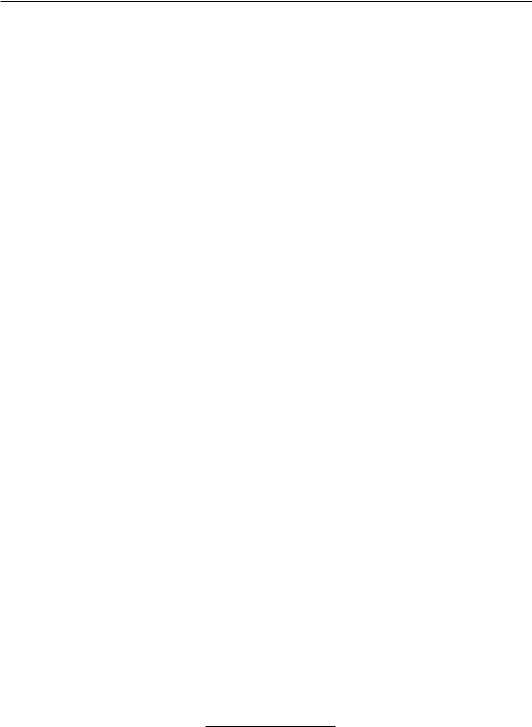
Study Session 4
Cross-Reference to CFA Institute Assigned Reading #15 - Markets in Action
penalty for selling Cuban cigars. Note that buyers pay, and sellers receive, a cash price equal to PL in this example.
The decrease in supply or demand for an illegal good increases as the value of the penalty increases. If the penalty is larger for the seller, the supply curve will shift by a greater amollnt than the demand curve and the cash market price will rise above what it would have been if the good were not illegal, perhaps very significantly so. The opposite is [[ue when penalties are higher for buyers.
Figure 9: Market for Illegal Cigars
Price
L - |
--'---- |
~ |
Quantll\. |
|
Q* |
|
|
Good is Legal (Point Ll |
|
Illegal to Sell (Point M) |
|
Cash price = PL |
|
|
Cash price = PM |
Full cost to buyer = 1\ |
|
Full cost to buyer = PM |
|
Net benefit to seller = PL |
|
Net benefit to seller = PN |
|
Illegal to Buy (Point N) |
|
Illegal to Buy or Sell (Point 0) |
|
Cash price = PN |
|
|
Cash price = p[ |
Full cost to buyer = PM |
|
Full cost to buyer = PII |
|
Net benefit to seller = r I\" |
|
Net benefit to seller = P5 |
|
©2008 Kaolan Schweser |
Pap-e 4') |

Srudy Session 4
Cross-Reference to CFA Institute Assigned Reading # 15 - Markets in Action -
KEy CONCEPTS
LOS 15.a
Market equilibrium occurs at the price and quantity where the demand curve intersects the short-run supply curve.
Outside shocks that reduce short-run supply result in a higher equilibrium price and lower equilibrium quantity. If the market operates freely, the higher price will cause producers to increase output in the long run, decreasing the equilibrium price and increasing quantity.
Price ceilings set below the equilibrium price result in excess demand. Under rent controL housing must be allocated by non-price methods such as \vaiting in line, bribes. decrc3ses in quality. and black markets. none of which can be expected [0 produce an efficient allocation of resources [0 housing. A black market operates outside the lq:~li S\·Sfe'm. anel rdcrs to rr~lns~\crions thai ,lrl" illegal.
LOS 1'S.b
A minimum wage ,lbove the equilibrium wage results in an excess supp,," of labor, ;l~, more workers arc willing to work at that wage than employers demand. Inc'l-iciencies result because employers substitute away from labor as an input, WOrkeTS spend extrJ time in job search activities, and less than the efficient amount of labor is used so that overall output declines.
LOS 15.c
The actual incidence of a tax refers to the extent to which buyers and sellers acrually bear the cost of a tax. The statutory incidence of the tax refers to who must legally pav the tax.
Acrual incidence of a tax is independent of who must legally pay the tax. The actual incidence falls more heavily on buyers when demand is less elastic than supply, and mOil' heavily on sellers when supply is less elastic than demand.
LOS 15.d
Subsidies increase production above the efficient quantity, resulting in deadweight losses from overproduction.
Production qUOC3S that reduce output below the equilibrium level lead to deadweight losses from underproduction and prices higher than equilibrium prices.
The expected penalties for trading in illegal goods cause both demand and supply curves to shift to the left, decreasing the equilibrium quantities compared to equilibrium quantities if the goods were legal.
Page 46

Study Session 4
Cross-Reference to CFA Institute Assigned Reading #15 - Markcts in Action
CONCEPT CHECKERS
J.A m3rket rl13t operates outside the legal system, h3ving prices th3t exceed leg31ly imposed price ceilings, is alan:
A.black m3rket.
B.subsidized market.
C. quot3 controlled market.
Rent control is an example of a:
A.quor3.
B.subsidy.
C. price ceiling.
.1. |
A minimum wage is 3n example of a: |
||
|
i\. |
slibsilk |
|
|
B |
f1ri(V |
Hoor. |
|
C. |
f1ricl |
ccilin~. |
-1. QllOL1S placed above the equilibrium lJluntit~,:
A.increase marsinal cost.
B.result in oVLTproduuion. C. have no effeer on OlltpllL
~, A subsidv:
A.h3s no effeCt on output.
B.leads to underproduction.
C.shifts the supply curve down (to the right).
6. As 3 result of 3 production quota set below the equilibrium quantity:
A.marginal benefit will exceed marginal cost.
B.margin3l cost will exceed m3rginal benefit.
C. marginal henefit and margin:t1 cost will decline.
Assume a good becomes ilkgal to buv or sell. and the expected penalty for selling the good is greater than that for buying the good. Relative to when the good W3S legal:
A.price and quantity will rise.
B.price and qmntity will decline.
C.price wiJl rise and quantity will decline.
8.A price ceiling is only effective if it:
J\. is set above the elJuilibriul11 price.
B.is set below the equilihrium price.
C.h3s been in effect in over 3 relativeh' short time.
9.An eX3mple of a price floor is:
A.rent controls.
B.a tax on ceramic tile.
C.a minimum price for milk.
(c)?OOR K~nbn S("hW~.~N |
Pa!!c 47 |

Study Session 4
Cross-Reference to CPA Institute Assigned Reading #15 - Markets in Action
10.The government imposes a tax on a good. The relative amounts of the tax that each economic actor in the market pays is called the:
A.statutory tax.
B.tax incidence. C. deadweight loss.
Pae-e 4R

Study Session 4
Cross-Reference to CFA Institute Assigned Reading #15 - Markets in Action
ANSWERS - CONCEPT CHECKERS
1.A A black market is a market where trades of goods prohibited by law or trades at prices prohibited by law are made.
2.c Rent controls are price ceilings and have the effect of reducing supply.
3.B A minimum wage is a price Aoor and will likely increase unemployment.
4.c A quota that is less than the equilibrium output quanrity leads to a decrease in production and a deadweight loss from an inefficient allocation of resources. Quotas above the equilibrium quantity have no effect on output quantiry.
5.c A subsidy effectively shifts the supply curve to the right, which means a larger quantity
is supplied at each price. The resulting new equilibrium will be at a quantity where margin::d cost is greater than marginal benefit so that there is an economic loss from produerion of more than the optimal amount of the subsidized good.
G. A If outpul i, forced {O be helow the eyuilibrium yualltin", the nurginal benent will exceed the marginal cost and a deadweight loss come, about from underproduction.
c If the expected penal!\' to sellers of illegal good, is greater than that to the buver,. the supplv curve will shift up more than the demand cur\'e will shih downward. The result is that price will rise and quanritv will decline.
8.B A price ceiling is only effective if il is lower than the equilibrium price withoul the ceiling. This leads to a shortage as consumers wish to purchase a quantity of the good dt the ceiling price which is greater than the quantity supplied at that price.
9.c A price floor is a minimum on the price that suppliers can charge. Such Aoors were once common in agricultural markets.
10.B This is the definition of the incidence of a tax. It is determined by the shape of the supply and demand curves. not upon whom the tax is imposed legally (the statutory incidence of the tax).
©2008 KaDlan Schweser |
Page 49 |
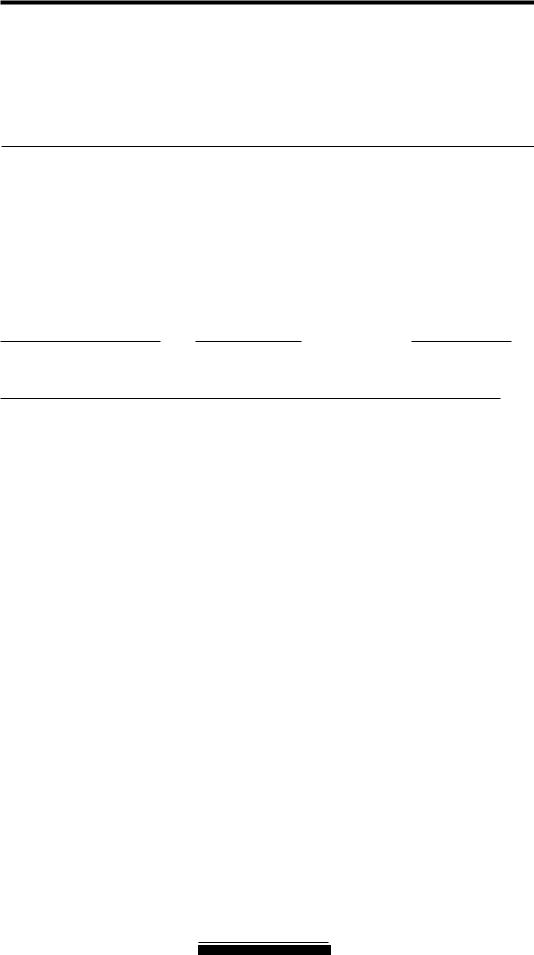
The following is a review of the Economics principles designed to address the learning outcome statements set forth by CFA Institute®. This topic is also covered in:
ORGANIZING PRODUCTION
Study Session 4
EXAM Focus
Make sure you can calculate economic profit, which requires that you idenrify relevant opportunity costs. Also, you should understand the differenr types of market competition and the issues surrounding the concenrration measures of the degree of competition. The pros and cons of the
differenr forms of business organization are another likely exam topic. You should also be able to differenriate between technological and economic efficiency. A basic understanding of the principal-agent problem will be sufficienr here.
'('.a: Expiain the type:, ni oppGrrumn «(}:;t aod their relation to CCOl!.!1In:.
Opportunity co~t is the re(Urn thaI a firm's resources ,'ould have earned elsewhere in it\ next most valuahle use. Opportunity cost includes both explicit and implicit costs.
Explicit costs are observable, measurable expenses such as the dollar cost of production inputs and the interest cost of renring (borrowing) capital.
Implicit costs are not explicitly observable and fall into twO categories: (I) the opportunity cost to a firm of using its own capital and (2) the opportunity cost of the time and financial resources of the firm's owners.
The implicit rel1tal rate is the term used to describe the opportunity cost to a firm for using its own capital. Jt represent.'> what the firm could have earned if it had rented its capital (money and/or physical assets) to another firm. The implicit rental rate i:; the sum of: (1) economic depreciation. which is the decrease in the value of a firm's assets over time. and (2) .forfgOI1(, interest.
•Normal profz't is the opportunity cost of owners' entrepreneurship expertise. It represenrs what owners could have earned if the)' used their organizatiolul, decisionmaking, and other entrepreneurial skills in another activit\', such as running another business.
Economic profit considers both explicit and implicit costs. When the firm's revenues are JUSt equal to its opportunity costs (explicit and implicit costs, including a normal profit), economic profits are zero. The computation of economic profit is illustrated in Figure 1.
Page 50
